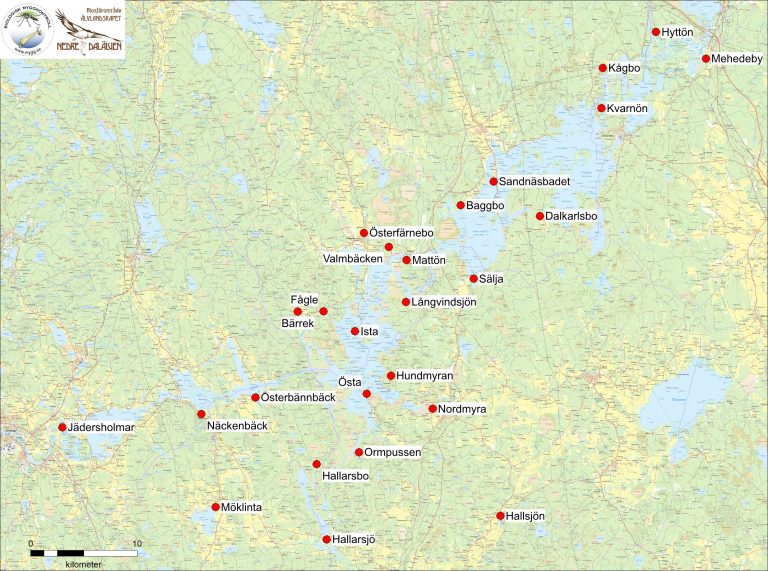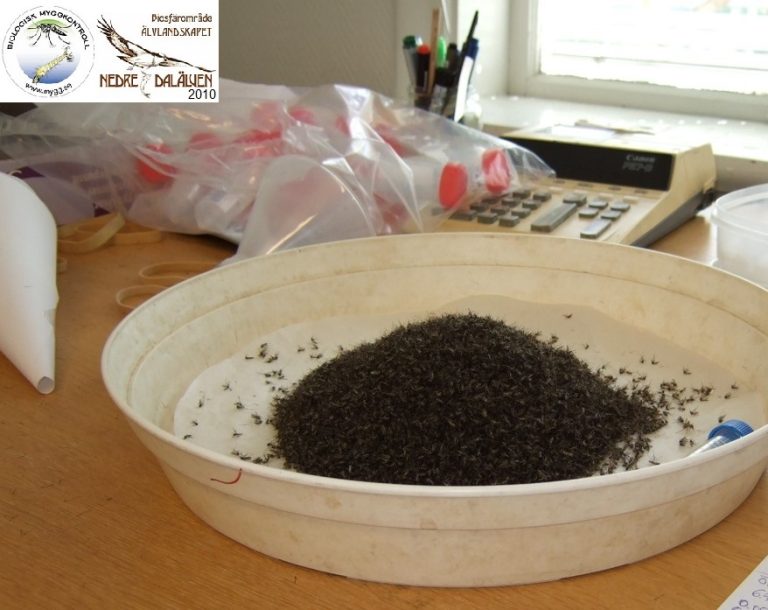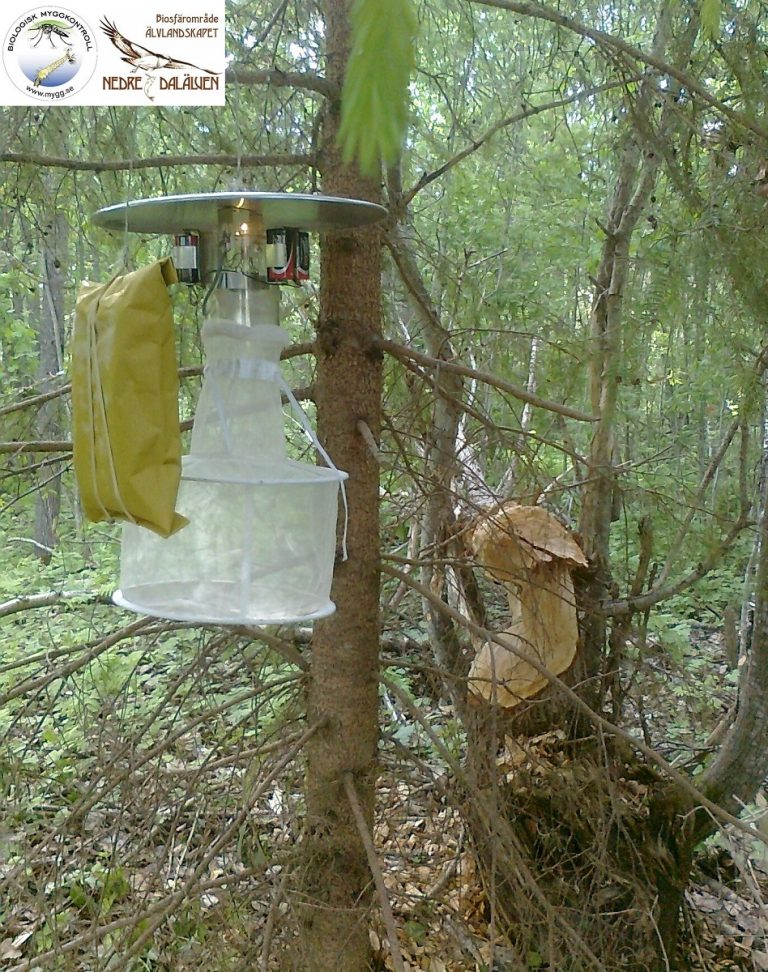Mosquito surveillance
The aim of our mosquito surveillance programme is to follow the variation in mosquito species composition and abundance in the parts of Nedre Dalälven region that have been hit by mosquito nuisance problems. The mosquito surveillance programme commenced in May 2001 with bi-weekly sampling of mosquitoes at 23 localities in 7 municipalities. Over the years, some sites have been replaced and others have been added. In 2023 we are performing bi-weekly sampling for mosquitoes in 26 sites distributed within 8 municipalities along the River Dalälven, see MAP.
Every second week, starting week 19 in May and finishing week 37 in September, we collect mosquitoes, count them and publish the results here on our homepage. We use Centers for Disease Control and Prevention (CDC) miniature light traps, with carbon dioxide as attractant, which is the standard method for sampling blood-seeking female mosquitoes. Carbon dioxide attracts female mosquitoes searching for a blood-meal, and is used as a lure in almost all mosquito traps. The CDC-traps are used from afternoon until next morning. Captured insects are anaesthetised with an overdose of carbon dioxide before sorting and counting, and then stored in a freezer until species identification under a microscope in the laboratory in Uppsala.



